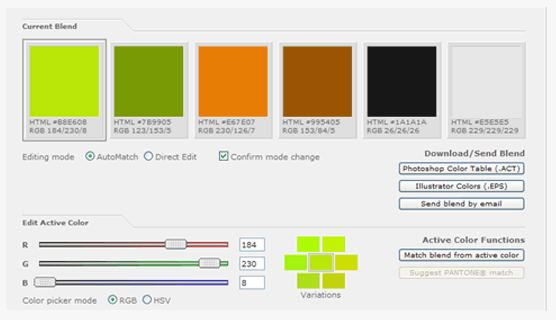
Color is the polar opposite of our fifth and final critical blend mode, Luminosity, which ignores all colors in the layer and blends only the lightness values. If you choose to integrate or adjust colors in a picture without adjusting the brightness values, the Color blend mode is ideal. In photoshop, the term "color blend mode"refers to the combination of the first two modes in the composition category, hue, and saturation. The layer's luminosity (lightness) values are ignored entirely. In Digital Art When you change the blend mode of a layer to Color, only the color (all of the hues and their saturation values) of the layer is blended in with the layer or layers below it. At the end, your artwork's colors will remain bright. Colorless blender pencils are pigment-free, wax-based cores that allow you to soften and blend your pencil drawing without changing the color palette. You can also use a colorless blender pencil in your drawings. Use a completely clean and dry brush for blendings because even the trace of other colors may mess up the result. You can combine by adding more paint or working with the paint on the canvas or paper which is already there. It's a great way to make a smooth transition from one color to the other, and it's especially practical for finer details and making your paintings look more natural. Blending can be achieved with any form of paint, but we mostly think of it when dealing with either oils or acrylics. Artists frequently study several techniques and choose the best to produce the desired results for a specific painting. We generally use the blending technique to mix two separate colors of paint. It contributes to the work's subtlety and can give it a more polished, finished appearance.

In whatever medium you want to work with as an artist, it's important to practice blending. As mentioned before, It's a technique for making a smooth transition or softening lines by combining two or more colors or values. In Art Color blending is often used in paintings. Also, you could see random color blendings, edit them, or even save and export them in different formats, as URL, JPG, PNG, PDF, CSS, SVG, TXT, and HTML.

When you switch between value formats, whatever values are currently in place will be translated. The palette will show the inserted colors, also the requested number of midpoint colors, and their values. Finally, choose the number of midpoints you want to see.
COLORBLENDER HOW TO
How To Use The Color Blender GeneratorĬhoose a color value format or use the color picker, then enter two correct CSS color values in that format. The closer it gets to each main color, the closer the spectrum (shade) gets to the same color. There are these two colors you can enter in hex, RGB, CMYK, HSB, Pms or pick from a color wheel, and then also choose the levels of the blend (on a scale of 1 to 50), to see the stepped gradient colors. So, you need an "initial color" and a "final color" or a “first color” and “second color” to blend them together.

It produces color scales by combining shades of the two given colors. What Is The Color Blender?Ī color blenderis a tool which helps you generate a color transition between two colors in adjustable midpoints. Transition colors are a result of the two blended colors (for example, blending blue with yellow will make a green transition color in the middle point). The term color blendingrefers to a painting technique where two colors are gradually blended together mostly when they are still wet, resulting in a smooth transition (a color gradient) from one color to another. And by adjusting the screen and lens position, students can control the overlap of colors.This tool helps you blend two colors and create a spectral palette that contains the shades between those colors. As shown to the right, using a lens and viewing screen the Color Mixer can be focused and projected at each lab station. The Color Mixer also connects easily to an optics track and can be used with components of the Basic Optics system in laboratory investigations. Vary the intensities to produce nearly any color. Show how white light is produced and explore the secondary colors of cyan, magenta and yellow. Demonstrating additive color mixing is as simple as using any flat surface to project the light upon.

The intensity of the red, green and blue LEDs of the Color Mixer can be individually adjusted to easily vary the intensity of any or all of them. Three independently controllable LEDs offer a simple way to explore light and color. The Color Mixer can be used as both a demonstration tool and as an expansion piece to the Basic Optics System.


 0 kommentar(er)
0 kommentar(er)
